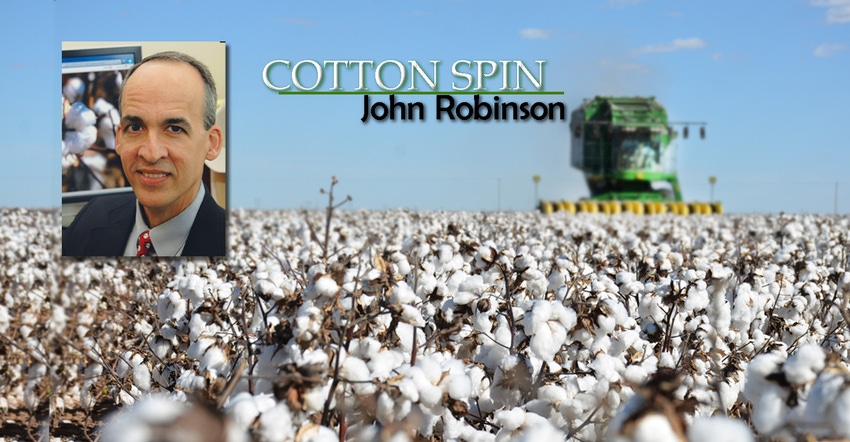
USDA’s July WASDE report showed modestly bearish adjustments to cotton market fundamentals. From a global standpoint, July’s new crop forecasts reflected more cotton supplies than was forecast in June. These month-over-month adjustments involved increased carry-in in Brazil and India, as well as increased production in Pakistan.
World trade and consumption were all lowered compared to the June forecasts. So, the combination of a little more supply and a little less use combined to raise world-ending stocks by 1.73 million bales, month over month. This result would be price weakening according to history and economic theory.
USDA’s adjustments to the U.S. cotton numbers were similar in their direction and implication. The predictable thing about the July WASDE is the updating of U.S. planted acreage using the USDA June 30 report. But in addition to this adjustment, USDA decreased abandonment, acknowledging the assumed net benefit of the May/June rains in Texas. The net effect of this planted/harvested acreage tinkering was no change in the 16.5 million-bale forecast of U.S. cotton production.
On the demand side, USDA reduced new crop cotton exports by 250,000 bales, which translated to a 300,000-bale increase in new crop ending stocks. This adjustment is neutral to slightly bearish in its implication.
So where do we go from here? The August WASDE typically incorporates the results of grower surveys about acreage and crop production potential. This survey data collection will continue in later months, as well as the inclusion of proven yield (i.e., field) sampling from September through December. And lastly, the production forecast will be informed by, and eventually reconciled with, survey data on bales ginned and observations of bales classed.
The upshot of this is that there is time and room for adjustment in the crop size. An unexpected downsizing of U.S. cotton production could trigger a weather market rally toward 90 cents. On the other hand, a surprisingly large crop could push prices below 80 cents.
For additional thoughts on these and other cotton marketing topics, please visit my weekly on-line newsletter at http://agrilife.org/cottonmarketing/.
About the Author(s)
You May Also Like




